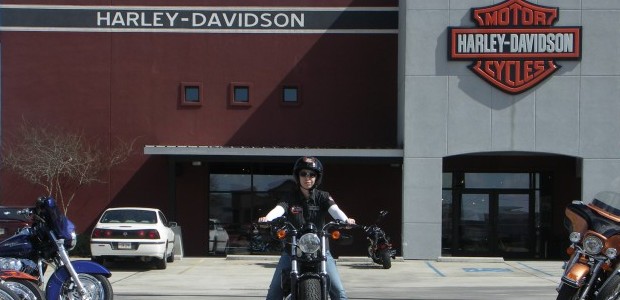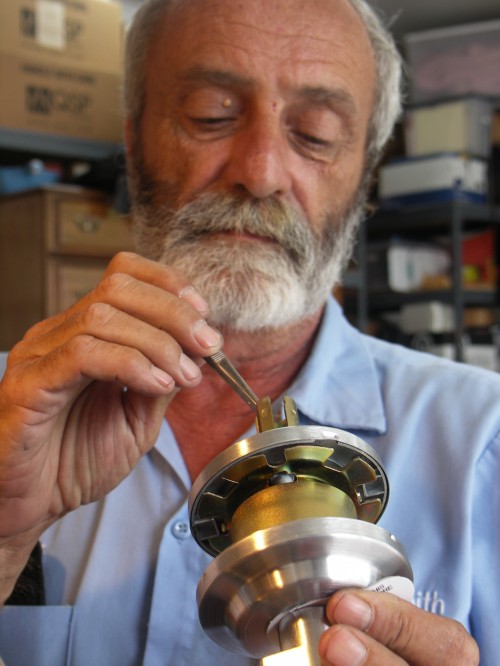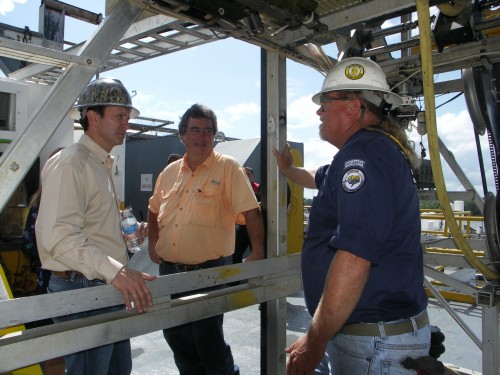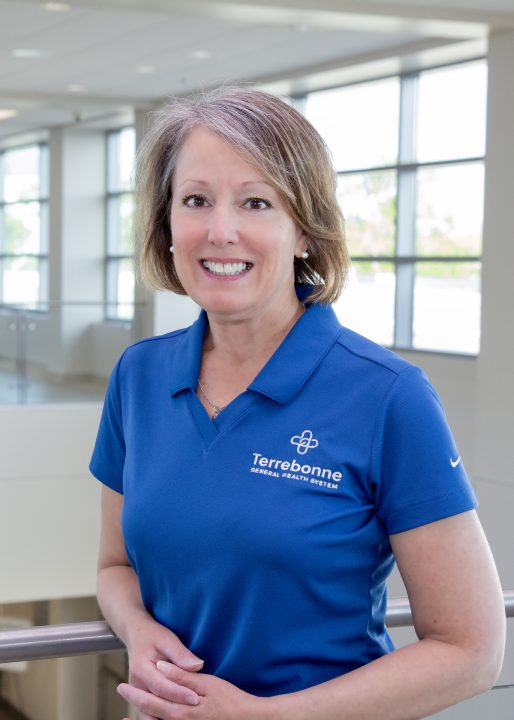
Harley’s rolling into Houma in 2013
May 9, 2012
Fitting interest, experience key to locksmith’s path
May 9, 2012Not saying if enhanced drilling activity is expected in the Gulf of Mexico, Rep. Jeff Landry acknowledged Thursday that new hires and increased oil field training are good economic indicators for the Tri-parish region.
This was a return visit for the congressman who was present on April 9, when Oceaneering International announced plans to invest $5 million to expand its remote operating vehicle manufacturing facility in Morgan City.
The company now revealed its intention to fill 148 technician spots in its ROV program by the end of 2012, and its desire to add 200 more workers on top of those.
“When you look at a company the size of Oceaneering, their footprint is much larger than the domestic U.S.A.,” Landry said. “They understand that as oil tops $100 a barrel there is going to be a continuous demand for drilling all around the world.
“What we know here in Louisiana is that we have undoubtedly the best talent, the people with the most experience in being able to extract minerals, oil and gas, from around the world,” he continued. “So, what they are seeing and anticipating is not only a domestic, but a global need for experienced hands.”
The company demonstrated its ROV program this week by introducing a crew of six trainees undergoing six weeks of instruction to operate and maintain equipment on the historic Mr. Charlie Rig at the intersection of the Intracoastal Waterway and Atchafalaya River.
The five Oceaneering ROV models are what inland residents refer to as robotic submarines, although that definition is considered an insult to crews working with the vehicles.
Oceaneering is the world’s largest work class ROV manufacturer and the leading provider of ROVs in the oil and gas industry. More than 2,000 offshore technicians operate 270 work class ROV systems around the globe with 79 in the Gulf of Mexico.
In the offshore oil and gas industry, work class submersible ROVs are used to perform many tasks. Their popularity boomed in the 1980s when new offshore development exceeded the reach of human divers.
Technological ROV development has advanced to the degree that today ROVs perform numerous tasks ranging from inspection of subsea structures, pipeline and platforms to connecting pipelines and placing underwater manifolds. They are used in both initial construction of a sub-sea structures and regular maintenance and repair.
Oceaneering’s ROV Training Program began in 1995 and now has a $10 million budget for ROV operations and maintenance training.
“Some of [the ROVs] will be installed at the shipyards where the rig is being built, which is how we like to do it,” Oceaneering ROV Operations Director Brett “Gonzo” Eychner said. “Some of the jobs we will load it on a barge and get it out there, however, we can get it out there.”
Eychner, along with Oceaneering training manager Steve Miller, said a highlight of the ROV program is the training that takes place on the Mr. Charlie.
“[Trainees] are in an environment that is going to replicate what they will see offshore,” Eychner said. “They eat together, they have areas where they discuss what they have learned. They get to understand some of the atmosphere they get to work in, and they get to work with the sub and equipment.”
“The training period is 28 days,” Miller added. “Some of these guys have not been offshore so it gives them an idea what to expect.”
Miller said candidates for the position of ROV technician are typically individuals with an electronic or hydraulics background. “A lot of them are ex-military guys that come with hydraulic training or electronic training,” he said. “We put them through our six-week training program and in that they learn [specifically] about the ROV.”
Miller noted an advantage of working offshore as being that hires need not live in the immediate area. “As long as they can get here to get out to the rig, they can live pretty much anywhere,” he said.
Kiley Godwing, 39, is an ROV technician trainee from Pensocola, Fla., who put in six years as a Navy aircraft carrier machinist mate before working with wind energy for General Electric.
“GE started reducing personnel then I saw this opportunity with Oceaneering,” Godwing said. “When I saw they were looking for remote operating vehicle technicians, I jumped at that. It uses my background in electronics. It uses my background in mechanics. I have an associate [degree] in drafting and design so it put that to work, too.”
Godwing said he expects good things and has been both challenged and pleased with what he has gained after four weeks on the job. “I came out here expecting to go to work,” he said. “The only time I’ve had information thrown at me faster was in the Navy’s nuclear power school.”
Guy Brown, 27, is from St. Francisville and worked as a slot machine technician at a New Orleans casino before spotting the ROV opportunity on the Internet. “I saw the ROV and knew it was more interesting,” he said. “I knew it was a career and not just a job. Plus, I got tired of doing the same thing every day with slot machines, and I got tired of the commute form St. Francisville to New Orleans every day.”
“We’ve got some good guys,” Oceaneering ROV instructor George Ewing said. “They are smart and have good backgrounds.”
Ewing, 63, said he is proof that one is never too old to work offshore in some capacity, nor too old to learn as he also underwent training to learn the equipment.
“Our business is crewing-up with personnel,” Ewing said. “The industry is fixing to grow. We are running 30 people a month through here and our goal is to increase that.
“Our management is expecting growth,” he continued. “They don’t tell me anything, but they know something. I told these guys they came in at a great time because of the growth that is fixing to happen.”
“What Washington should be hoping for is that all of those hands [being trained here] remain in the United States,” Landry said. “We want those jobs to stay here domestically so we can increase our domestic supply and hopefully bring relief to [gasoline] pumps around the country.”
Mr. Charlie curator and International Petroleum Museum President Virgil Allen said utilizing the rig as a training facility for local offshore companies is only part of its appeal.
Mr. Charlie was constructed in 1952 and went to work in 1954 as the world’s first transportable, submersible drilling rig and as an industry springboard to the current offshore rig technology. A final well was drilled from this facility in 1986.
The rig facility can accommodate a crew of 58. Its barge is approximately 220 feet long and 85 feet wide. Under the living quarters pontoons extend 136 feet in width. The platform floor is 60 feet above the barge, supported by the massive legs that connect the barge and platform. Legs also serve as conduit for connecting services such as: electric, water and air lines, elevator access and other services needed to operate an independent facility, out of sight of land. Mr. Charlie is also very small in comparison to today’s working offshore rigs.
Mr. Charlie is now a training location and Morgan City tourist attraction. “This facility gives people who are coming into the industry and have no experience offshore the ability to attempt the environment they are going into without having to put them in that environment immediately,” Landry said.
Landry praised the trainees he met and predicted that jobs associated to the oil and gas industry will continue to be created. “I am really impressed with that simulator and what they are doing here,” he said. “It is a testament to the rest of America what we can do in this country if we just get government off our backs.”













